Cold storage management in the seafood industry is a challenging task, requiring in-depth knowledge of the sector. With the unique nature of cold storage, maintaining goods in storage for an extended period is not feasible, presenting a significant challenge in achieving optimal efficiency. So, how is the cold storage management process carried out? At the same time, what are the current challenges that warehouse management is facing? Along with that, this article will detail solutions to these challenges, provided by Paracel!
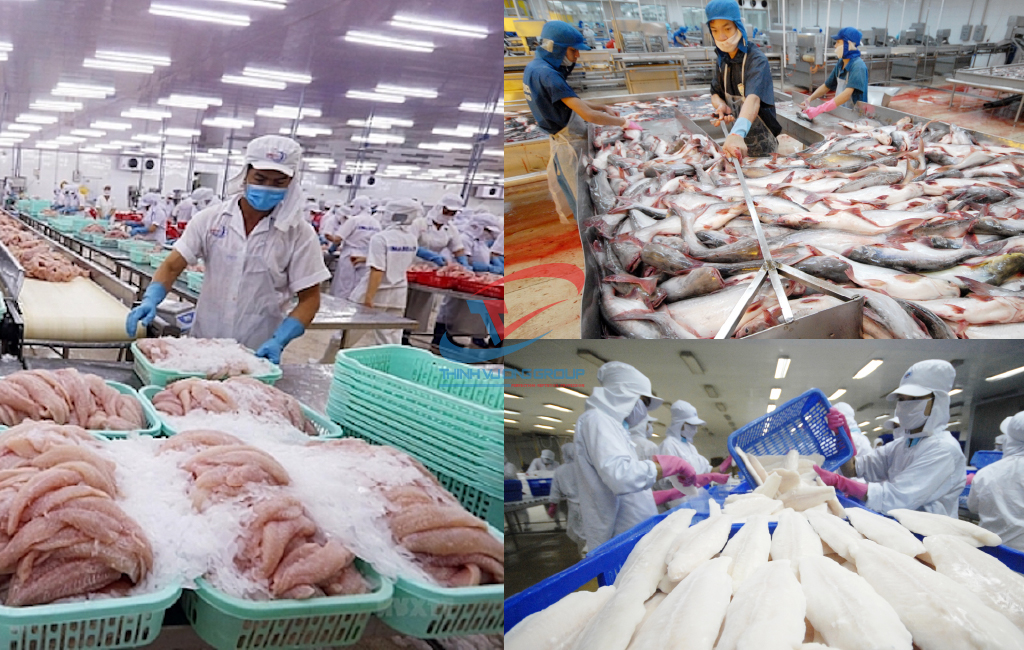
The Role of Cold Storage Management in the Seafood Industry:
The structure of cold storage facilities is complex, equipped with cooling, refrigeration, or freezing systems to preserve and store products. It has been proven that storage conditions play a crucial role in ensuring product quality. Therefore, cold storage management requires highly specialized skills, understanding all activities occurring inside and outside the warehouse to provide optimal solutions for complex issues.
In general, the tasks of cold storage management in the seafood industry include
Monitoring and Daily Goods Preservation:
This involves finding ways to address issues arising in regulations regarding cold food preservation, aiming to ensure the smooth progress of business operations.
Ensuring Effective Product Preservation in the Warehouse:
Each product, especially frozen food, requires specific temperatures to prevent damage. Warehouse managers need to grasp this information and adjust temperature and humidity to extend the product’s lifecycle, controlling moisture and temperature fluctuations to minimize negative impacts on quality.
Ensuring Quality and Maintaining the Product Lifecycle:
Applying appropriate measures for each preservation category to minimize damage, requiring comprehensive monitoring from harvesting and processing to warehouse entry.
Managing and closely monitoring preservation conditions from warehouse entry to consumer delivery.
Building Relationships with Partners and Integrating Stages from Preservation to Transportation: The goal is to expedite the product consumption process and enhance profitability.
The objective of cold storage management is to prevent product damage and loss while increasing profitability. This necessitates clear and tight workflows between steps from receiving goods, storage, shipping, retrieval, to transportation. Cold storage management plays a crucial role in building and maintaining strong relationships with partners, from distribution to transportation, ensuring that consumers receive the freshest seafood products at the best cost.
Challenges in Cold Storage Management in the Seafood Industry Today
Cold storage management requires high expertise, along with a thorough understanding of every aspect of the process of storing and preserving goods. Monitoring factors such as freezing time and the operation of cold storage equipment is essential. Additionally, managing the cold storage system requires awareness of potential risks and effective problem-solving skills.
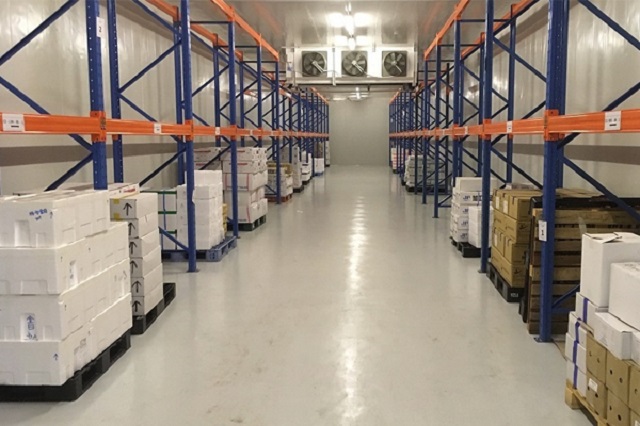
However, currently, cold storage management still faces the following challenges:
- Difficulty in Temperature Control:
- Each type of food requires a different storage temperature, especially for frozen foods like meat, poultry, seafood, cheese, and dairy products. Cold storage management must pay attention to operations to ensure the correct and stable temperature.
- Regulatory Compliance Challenges:
- Cold storage systems for agricultural products, food, and pharmaceuticals need to strictly adhere to regulations from the Occupational Safety and Health Administration (OSHA) and the U.S. Food and Drug Administration (FDA).
- Challenges in Goods and Food Preservation:
- Each cold storage facility typically serves specific types of goods, and adjusting temperature and humidity to prolong the product lifecycle is complex.
- Traditional temperature control systems often rely on the experience of operators, and a minor mistake can impact the entire inventory.
- Challenges in Preserving Food Sources:
- Ensuring the quality and safety of food from the source to the consumer is a challenge. Damage can occur at any stage in the supply chain if not well-controlled.
- Cold storage management needs to monitor and maintain preservation conditions from manufacturing, through the supply chain, to consumer delivery.
- Challenges in Transportation:
- Transportation is a critical factor in cold supply chain management. If transportation encounters disruptions, especially for frozen foods, the quality of goods may be affected if the temperature is not maintained consistently.
- Uncontrollable factors like weather conditions and vehicle breakdowns pose unforeseeable challenges.
- Equipment Damage in the Warehouse:
- Cooling equipment and cold storage doors may encounter issues and malfunctions over time. This can lead to the accumulation of moisture and adversely affect product quality.
- Contingency plans need to be established to minimize the negative impact of arising issues and maintain high warehouse performance.
Cold Storage Management Solution in the Seafood Industry – Odoo Inventory ERP
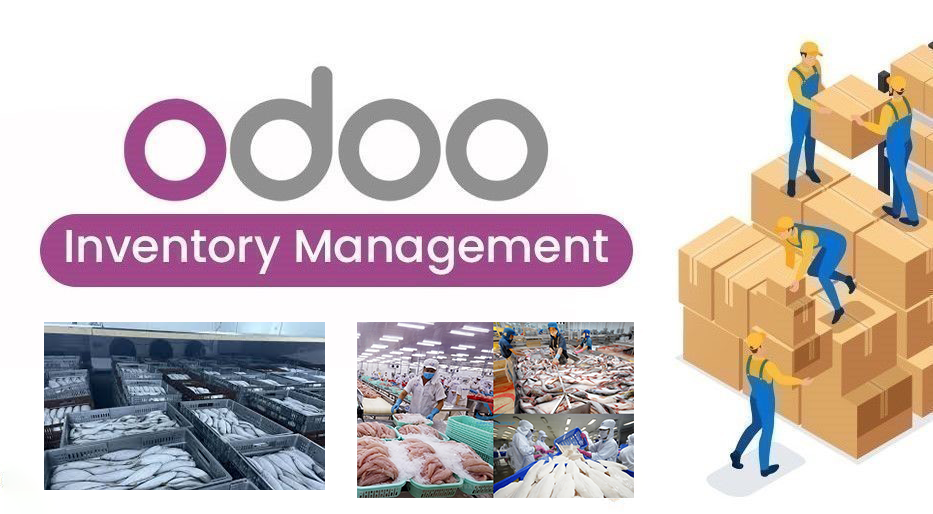
An increasing number of businesses in the seafood industry are transitioning to online warehouse management, and in this article, we would like to introduce Odoo Inventory – a software within the Odoo ERP system highly praised by many businesses for its flexibility and reasonable implementation cost.
Here are the key features of Odoo Inventory ERP that contribute to efficient cold storage management in the seafood industry:
Optimizing ERP Utilization:
Implementing an ERP system supports businesses in saving time and resources by automating daily tasks that previously required manual execution. The deployment of an automated management system not only enhances efficiency but also ensures high accuracy for output products.
Cost Savings:
Improving work efficiency and product quality helps reduce production and operational costs. Utilizing warehouse management software to automate daily operations minimizes manual labor costs. Additionally, reducing damaged, lost, or expired products contributes to cost savings for the business.
Accurate Data and Reporting:
The Odoo ERP Inventory system helps record data with high accuracy, minimizing errors in the data entry process. Furthermore, its ability to create and store reports on revenue and inventory enables businesses to monitor business performance and support the development planning process.
Inventory Management:
Having complete and accurate inventory information allows managers to monitor inventory status and implement disposal plans when necessary. This avoids situations where inventory becomes obsolete, damaged, or expires, resulting in cost reduction and increased opportunities for capital recovery.
Material Forecasting and Supplementary Ordering:
Inventory management helps businesses accurately forecast and plan orders, supporting the production process. The Odoo ERP Inventory system allows for item classification and adjustment of orders based on specific needs and market prices, ensuring maximum efficiency and cost savings.
Inventory Management in the Seafood Industry with Odoo:
- Comprehensive Management: Odoo provides comprehensive inventory management, allowing detailed information retrieval from suppliers to customers. Data is recorded and updated based on individual user settings, ensuring flexibility in inventory management.
- Packaging and Shipping: Odoo offers efficient packaging and shipping capabilities. The system can use barcodes such as QR codes or traditional barcodes, or operate without them. Odoo automatically prepares orders based on the availability of each product.
- Unified Warehouse Management: Odoo integrates the management of all warehouses into a single system and adheres to common supply rules among them. This ensures consistency and efficiency in inventory management.
- Barcode Scanner Usage: Odoo utilizes barcode scanners in activities such as inventory checks, batch entry, packaging of orders, and various other operations. This optimizes processing time and increases transparency in business operations.
- Note and Data Storage Features: Odoo ERP provides note-taking and data storage features, including Batch Control, Activity Logs, Serial Numbers, and Pricing. This makes management easier and enhances the ability to track details.
- Product Diversity Support: Odoo supports various types of products. Users can add custom fields to meet diverse business needs.
- Inventory Tracking: The inventory tracking feature identifies low or no-stock situations through fully automated supply source notifications. The use of automatic ordering points and RFQ supports efficient supply chain operations.
- Product Costing Feature: Odoo’s inventory management system supports various product costing methods such as FIFO (First In, First Out), average cost, and standard cost, ensuring flexibility in cost and pricing management.
The Latest Version – Odoo 15 brings many improvements and new features, optimizing warehouse management flexibly and efficiently.
Introduced in 2022, Odoo 15 Inventory assists businesses in effectively managing cold storage warehouses in the seafood industry with enhanced features.
Cold Storage Warehouse Management Process in the Seafood Industry with Odoo Inventory
Similar to managing various warehouses, Odoo Inventory’s cold storage management is divided into three basic steps: product code management, inventory entry management, and outbound management.
Product Code Management Process:
Step 1: Add New Product Code When the planning department or direct management wants to add a new product code, they can send a request to the responsible department.
Step 2: Check Goods and Reconcile The product code department will rely on the request information, check, and compare it with the actual existence of the product.
Step 3: Update Product Code
- For new code requests: Applied to new products without existing codes in the warehouse. The responsible person applies general rules to assign codes based on product characteristics and updates them in the system.
- For change or deletion requests: Review the request, assess its necessity, and if appropriate, proceed with deleting or updating the code, notifying relevant departments about the changes.
Step 4: Notify Changes in Product Codes Notify relevant departments about any changes in product codes to help them update information for future tasks.
This process ensures efficient management of product codes in the cold storage of the seafood industry using Odoo Inventory.
Inventory Entry Management Process: For raw material entry:
- Notify Raw Material Entry Plan: Begin by notifying the plan for raw material entry from relevant departments.
- Check and Reconcile: The inventory management department performs checks and reconciliations to ensure the accuracy of the goods.
- Create Entry Forms: After verification, create entry forms to record information about the raw materials.
- Complete Entry: The process ends when the entry process is completed.
For finished product entry:
- Entry Request: Departments needing entry send entry requests.
- Check and Sign on Delivery Receipt: Warehouse personnel check the goods and sign on the delivery receipt to confirm receipt.
- Create Entry Forms and Sign Receipt: This step is performed by the accounting or warehouse department, creating forms and signing receipts for the products.
- Enter and Update Information: Products are entered into inventory, and related information is updated on the inventory card or warehouse management software.
Warehouse Operations Outbound Management Process: For selling goods:
- Send Goods Out Request: Start with sending a request to send out goods from the department in need.
- Check Inventory: The inventory management department checks the inventory to ensure there is enough stock to be sent out.
- Create Outbound Forms and Sales Invoices: After checking, create outbound forms and sales invoices to record the outbound goods.
- Ship Goods: The goods are shipped out of the warehouse based on the information in the outbound form.
- Update Information: Update information about outbound goods, logs, and remaining inventory quantities.
For production output:
- Send Request for Raw Material Output: The department in need of production sends a request for raw material output.
- Approval of Request: The board of directors or authorized personnel approves the raw material output request.
- Receive and Check: The accounting department receives and checks the inventory. If there is enough quantity, an output form is printed.
- Execute Raw Material Output: The warehouse personnel execute the output of raw materials based on the information in the output form.
- Update Information: The warehouse personnel and accounting update new information into the system, including inventory cards and inventory figures.
Conclusion
Through this article, it is hoped that you have gained a profound understanding of effective cold storage management methods for the seafood industry and can choose a system that best suits your business. Only when warehouse management achieves high efficiency can your store maintain organized goods and tight inventory management. This not only minimizes losses and errors but also saves time and costs, contributing to increased revenue for the store and the business.
Furthermore, choosing suitable inventory management software is crucial. With the excellent features of Odoo ERP Inventory management software, businesses can easily manage resources, inventory, and production materials, optimizing internal processes.
Paracel, a Silver partner of Odoo in the Asia region, is always ready to listen and advise businesses on the optimal implementation and use of Odoo ERP management software. We provide customized Odoo solutions for each business, ensuring that the operational processes are optimized effectively. Contact Paracel now for detailed advice and a free quote for the Odoo ERP inventory management solution!


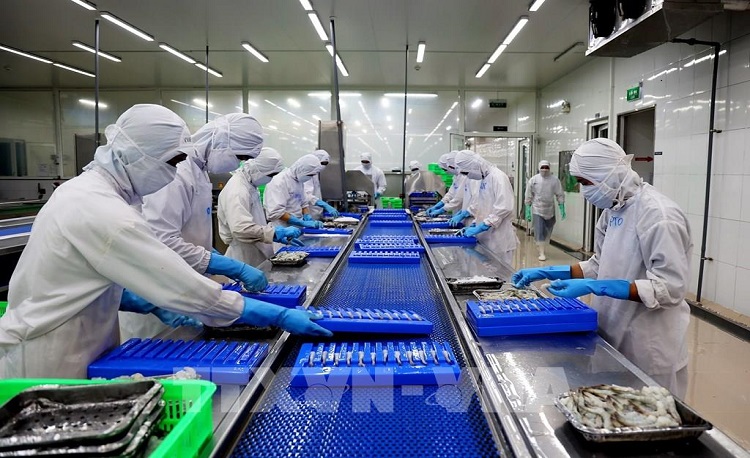
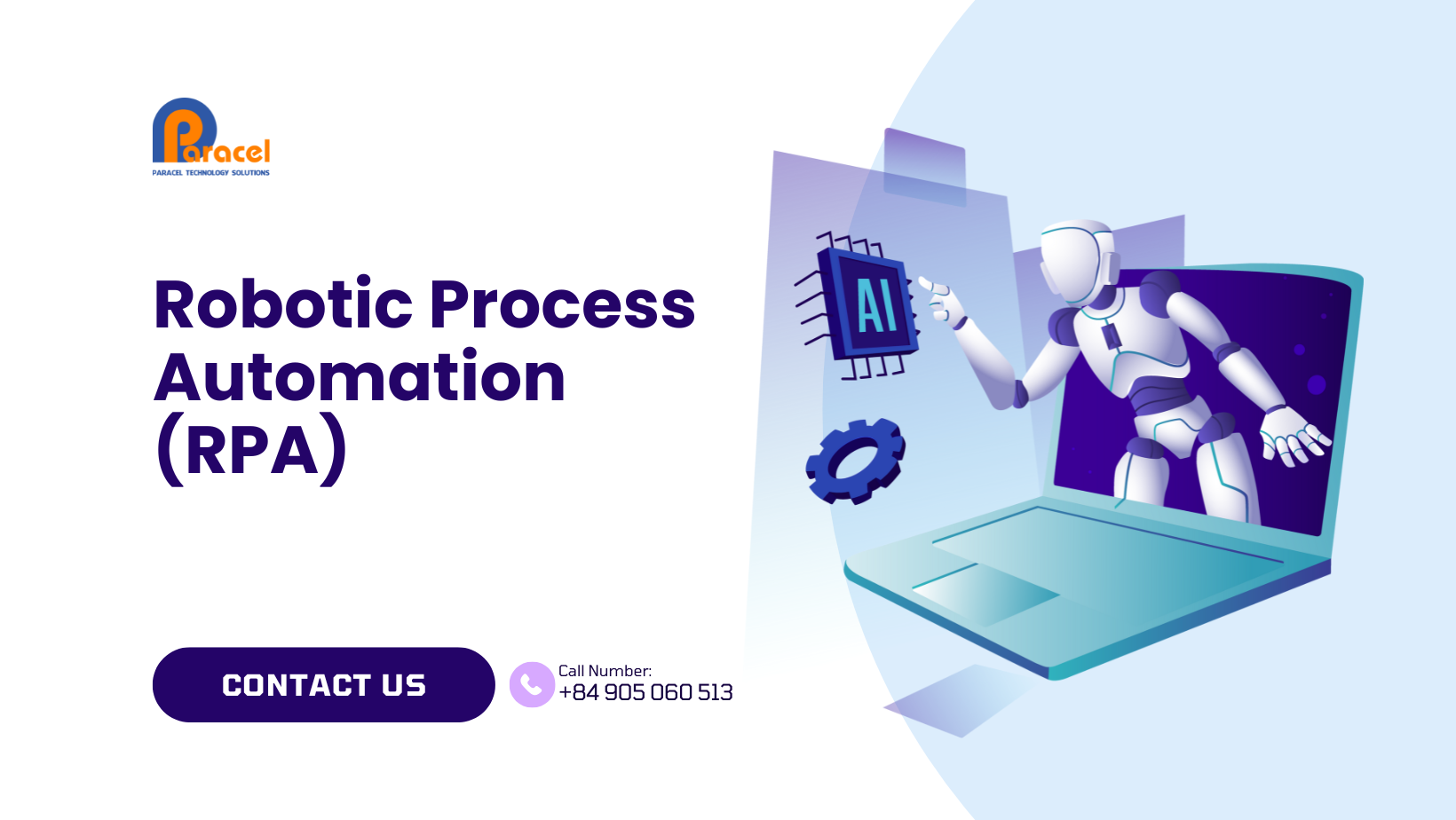
маркетплейс аккаунтов соцсетей маркетплейс для реселлеров
перепродажа аккаунтов площадка для продажи аккаунтов
маркетплейс аккаунтов профиль с подписчиками
маркетплейс аккаунтов маркетплейс аккаунтов соцсетей
магазин аккаунтов площадка для продажи аккаунтов
маркетплейс для реселлеров безопасная сделка аккаунтов
гарантия при продаже аккаунтов продать аккаунт
Database of Accounts for Sale Online Account Store
Account Acquisition Account Selling Service
Sell accounts https://socialaccountsmarket2025.com/
Account Trading Secure Account Sales
Profitable Account Sales Find Accounts for Sale
Account Buying Platform Account Selling Platform
Account Trading Platform Marketplace for Ready-Made Accounts
Online Account Store Account Acquisition
Website for Selling Accounts Accounts for Sale
Account marketplace Social media account marketplace
online account store buy and sell accounts
account marketplace website for selling accounts
account exchange service guaranteed accounts
online account store secure account purchasing platform
account purchase accounts for sale
account sale gaming account marketplace
website for selling accounts account trading platform
account purchase account market
accounts market purchase ready-made accounts
account trading platform account buying service
buy accounts gaming account marketplace
account exchange service account sale
account exchange service marketplace for ready-made accounts
accounts for sale account acquisition
buy accounts https://accounts-for-sale.org/
account trading platform account buying platform
account market https://social-accounts-marketplace.org
marketplace for ready-made accounts database of accounts for sale
sell pre-made account secure account purchasing platform
account market find accounts for sale
account exchange service account exchange service
account trading service secure account sales
buy pre-made account ready-made accounts for sale
account market discount-accounts.org
website for selling accounts online account store
accounts market website for selling accounts
website for buying accounts account purchase
accounts marketplace online account store
database of accounts for sale https://accounts-offer.org
account trading platform https://accounts-marketplace.xyz
verified accounts for sale https://buy-best-accounts.org
verified accounts for sale https://social-accounts-marketplaces.live
accounts marketplace https://accounts-marketplace.live
account selling service account market
account exchange https://buy-accounts.space
account acquisition https://buy-accounts-shop.pro
account buying platform account market
purchase ready-made accounts account marketplace
account selling service https://accounts-marketplace.online/
buy account https://accounts-marketplace-best.pro
биржа аккаунтов маркетплейсов аккаунтов
биржа аккаунтов https://rynok-akkauntov.top
биржа аккаунтов kupit-akkaunt.xyz
продажа аккаунтов https://akkaunt-magazin.online/
маркетплейс аккаунтов https://akkaunty-market.live
маркетплейс аккаунтов магазины аккаунтов
маркетплейс аккаунтов https://akkaunty-optom.live/
маркетплейс аккаунтов online-akkaunty-magazin.xyz
маркетплейс аккаунтов соцсетей akkaunty-dlya-prodazhi.pro
маркетплейс аккаунтов https://kupit-akkaunt.online/
buy fb account https://buy-adsaccounts.work/
buy facebook accounts for advertising facebook accounts to buy
buy facebook profile buy a facebook account
facebook ads account for sale https://buy-ads-account.click
cheap facebook accounts https://ad-account-buy.top
buy facebook accounts for advertising https://buy-ads-account.work/
buy aged facebook ads account https://ad-account-for-sale.top
buy fb ad account https://buy-ad-account.click
buy facebook account https://ad-accounts-for-sale.work/
buy google ads threshold accounts buy aged google ads accounts
buy aged google ads accounts https://buy-ads-accounts.click
buy facebook ads account buy facebook profiles
buy google ads invoice account https://ads-account-for-sale.top
google ads account buy ads-account-buy.work
buy google ad threshold account buy account google ads
buy google adwords accounts buy account google ads
buy google ads threshold account https://ads-agency-account-buy.click
buy facebook bm account buy-business-manager.org
buy google ads accounts buy google ad account
facebook business manager account buy https://buy-bm-account.org/
buy verified facebook business manager account https://buy-business-manager-acc.org
buy fb bm https://buy-verified-business-manager-account.org/
buy business manager facebook https://buy-verified-business-manager.org
facebook business manager buy https://business-manager-for-sale.org
buy facebook business managers facebook business account for sale
buy business manager fb bussiness manager
verified bm https://verified-business-manager-for-sale.org
buy fb business manager https://buy-business-manager-accounts.org
buy tiktok ads accounts buy tiktok ads
buy tiktok ads account https://tiktok-ads-account-buy.org
tiktok agency account for sale tiktok ads agency account
tiktok agency account for sale https://tiktok-agency-account-for-sale.org
tiktok agency account for sale https://buy-tiktok-ad-account.org
tiktok ads account for sale https://buy-tiktok-ads-accounts.org
tiktok ads account for sale https://tiktok-ads-agency-account.org
tiktok ads agency account https://buy-tiktok-business-account.org
buy tiktok ads account https://buy-tiktok-ads.org
how to get clomid no prescription how can i get clomiphene price cost cheap clomid online cost clomiphene pills can i buy generic clomiphene without prescription clomid contraindications can i purchase cheap clomiphene online
I’ll certainly bring back to skim more.
This is the stripe of serenity I get high on reading.
purchase zithromax online – ofloxacin 200mg cheap brand metronidazole 200mg
buy rybelsus 14 mg online – order periactin 4mg without prescription buy generic cyproheptadine
buy domperidone 10mg pill – tetracycline over the counter where to buy cyclobenzaprine without a prescription
inderal 10mg without prescription – buy methotrexate medication order methotrexate 10mg pill
amoxicillin for sale online – buy amoxil tablets combivent online
order zithromax 250mg pill – buy nebivolol without prescription nebivolol 5mg brand
augmentin without prescription – https://atbioinfo.com/ buy acillin online
order generic nexium 40mg – https://anexamate.com/ purchase nexium for sale
buy coumadin 5mg sale – https://coumamide.com/ losartan 25mg ca
buy meloxicam 7.5mg without prescription – tenderness meloxicam 15mg drug
buy generic prednisone – https://apreplson.com/ deltasone without prescription
ed pills otc – fast ed to take medicine for erectile
amoxil sale – amoxil for sale amoxicillin online order
cheap diflucan – click order forcan pills